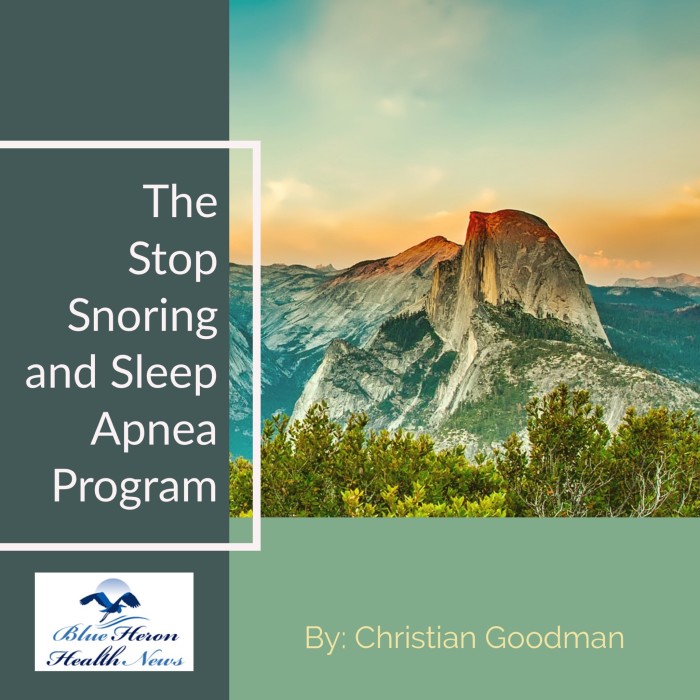
The Stop Snoring And Sleep Apnea Program™ By Christian Goodman if you have been suffering from snoring and sleep apnea and you are looking for permanent, cost effective and natural solution then The Stop Snoring and Sleep Apnea Program will help you. All strategies given have been tested and proven to work.
How do anatomical factors affect snoring and sleep apnea?
Anatomical factors play a significant role in the development of snoring and sleep apnea, particularly obstructive sleep apnea (OSA). These factors influence the size, shape, and function of the upper airway, which can become obstructed during sleep, leading to snoring and disrupted breathing. Here’s how anatomical factors affect snoring and sleep apnea:
1. Upper Airway Anatomy
- Narrow Airway: Individuals with a naturally narrow upper airway are more prone to snoring and sleep apnea. A smaller airway diameter increases the likelihood of airway collapse during sleep, especially when the muscles that support the airway relax.
- Soft Palate and Uvula: An elongated soft palate or uvula can obstruct the airway, especially when lying down. The uvula may vibrate as air passes through the throat during sleep, causing snoring. In cases of sleep apnea, the soft palate may contribute to complete airway collapse.
2. Enlarged Tonsils and Adenoids
- Obstruction of Airflow: Enlarged tonsils and adenoids are common anatomical causes of snoring and sleep apnea, especially in children. These structures can block airflow in the throat, leading to airway obstruction during sleep. In adults, enlarged tonsils can also contribute to sleep apnea by reducing the airway space.
- Role in Sleep Apnea: In some cases, removal of the tonsils and adenoids (tonsillectomy and adenoidectomy) can alleviate sleep apnea, particularly in children.
3. Tongue Size and Position
- Large Tongue (Macroglossia): Individuals with a large tongue may experience airway obstruction during sleep. The tongue can fall back into the throat when lying down, especially during sleep when muscle tone is reduced, leading to snoring and episodes of obstructed breathing.
- Tongue Base Obstruction: The base of the tongue may contribute to airway collapse in individuals with sleep apnea. When the muscles of the tongue relax during sleep, the tongue may fall backward, obstructing the airway and contributing to apnea episodes.
4. Jaw Structure (Craniofacial Anatomy)
- Retrognathia or Micrognathia (Recessed or Small Jaw): A small or recessed lower jaw (mandible) can contribute to snoring and sleep apnea by reducing the space in the upper airway. The tongue and other soft tissues may be pushed backward, narrowing the airway and making it more likely to collapse during sleep.
- Overbite or Malocclusion: Misalignment of the teeth or an overbite may also reduce the airway size and contribute to airway obstruction, increasing the likelihood of snoring and sleep apnea.
- Maxillary Deficiency: In some cases, a narrow or underdeveloped upper jaw (maxillary deficiency) can limit the space available for the tongue and other soft tissues, leading to airway obstruction.
5. Neck Circumference
- Thick Neck: A larger neck circumference is associated with a higher risk of snoring and sleep apnea. Excess fat around the neck can compress the airway, making it more prone to collapse during sleep. A neck circumference greater than 17 inches in men and 16 inches in women is considered a strong risk factor for sleep apnea.
6. Nasal Obstruction
- Deviated Septum: A deviated nasal septum, in which the wall separating the two nasal passages is displaced to one side, can cause nasal obstruction and contribute to snoring and mouth breathing during sleep. Difficulty breathing through the nose can increase airflow resistance in the throat, leading to snoring and exacerbating sleep apnea.
- Nasal Polyps: Nasal polyps, which are non-cancerous growths in the nasal passages, can obstruct airflow and contribute to snoring and sleep apnea. Surgical removal of polyps may improve breathing and reduce snoring.
- Chronic Nasal Congestion: Allergies, sinus infections, or chronic nasal congestion can cause partial nasal obstruction, leading to mouth breathing during sleep. This can increase the risk of airway collapse in the throat and contribute to sleep apnea.
7. Obesity and Fat Deposits
- Pharyngeal Fat Deposition: Excess fat deposits around the neck and throat can narrow the upper airway, making it more prone to collapse during sleep. This is particularly relevant in individuals with obesity, where fat can accumulate in the tissues surrounding the airway.
- Abdominal Fat and Breathing Mechanics: In addition to fat around the neck, central obesity (excess abdominal fat) can affect breathing mechanics by putting pressure on the diaphragm, reducing lung capacity, and exacerbating airway obstruction during sleep.
8. Soft Tissue Laxity
- Age-Related Changes: As people age, the soft tissues in the throat, including the muscles of the airway, tend to lose tone and become more lax. This increased laxity can make the airway more prone to collapse during sleep, contributing to both snoring and sleep apnea.
- Muscle Relaxation During Sleep: During sleep, particularly during rapid eye movement (REM) sleep, the muscles of the throat and tongue relax. In individuals with anatomical predispositions (such as a narrow airway or enlarged soft tissues), this muscle relaxation can cause the airway to collapse, leading to obstructive sleep apnea.
Conclusion:
Anatomical factors such as a narrow airway, large tonsils, enlarged tongue, recessed jaw, nasal obstruction, and excess fat around the neck and throat can all contribute to snoring and obstructive sleep apnea. These factors increase the likelihood of airway obstruction during sleep, particularly when muscle tone decreases and the airway becomes more prone to collapse.

The Stop Snoring And Sleep Apnea Program™ By Christian Goodman if you have been suffering from snoring and sleep apnea and you are looking for permanent, cost effective and natural solution then The Stop Snoring and Sleep Apnea Program will help you. All strategies given have been tested and proven to work.